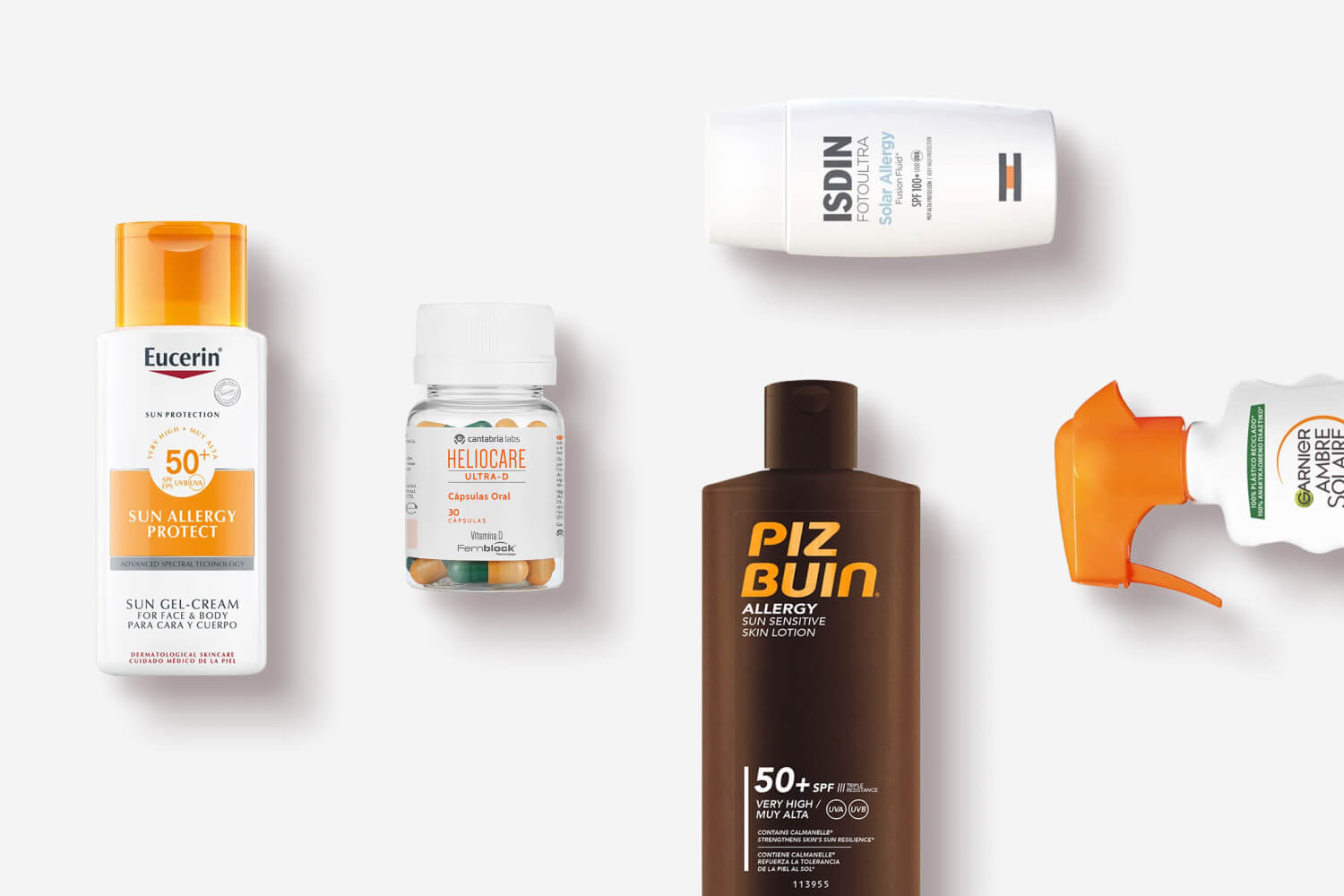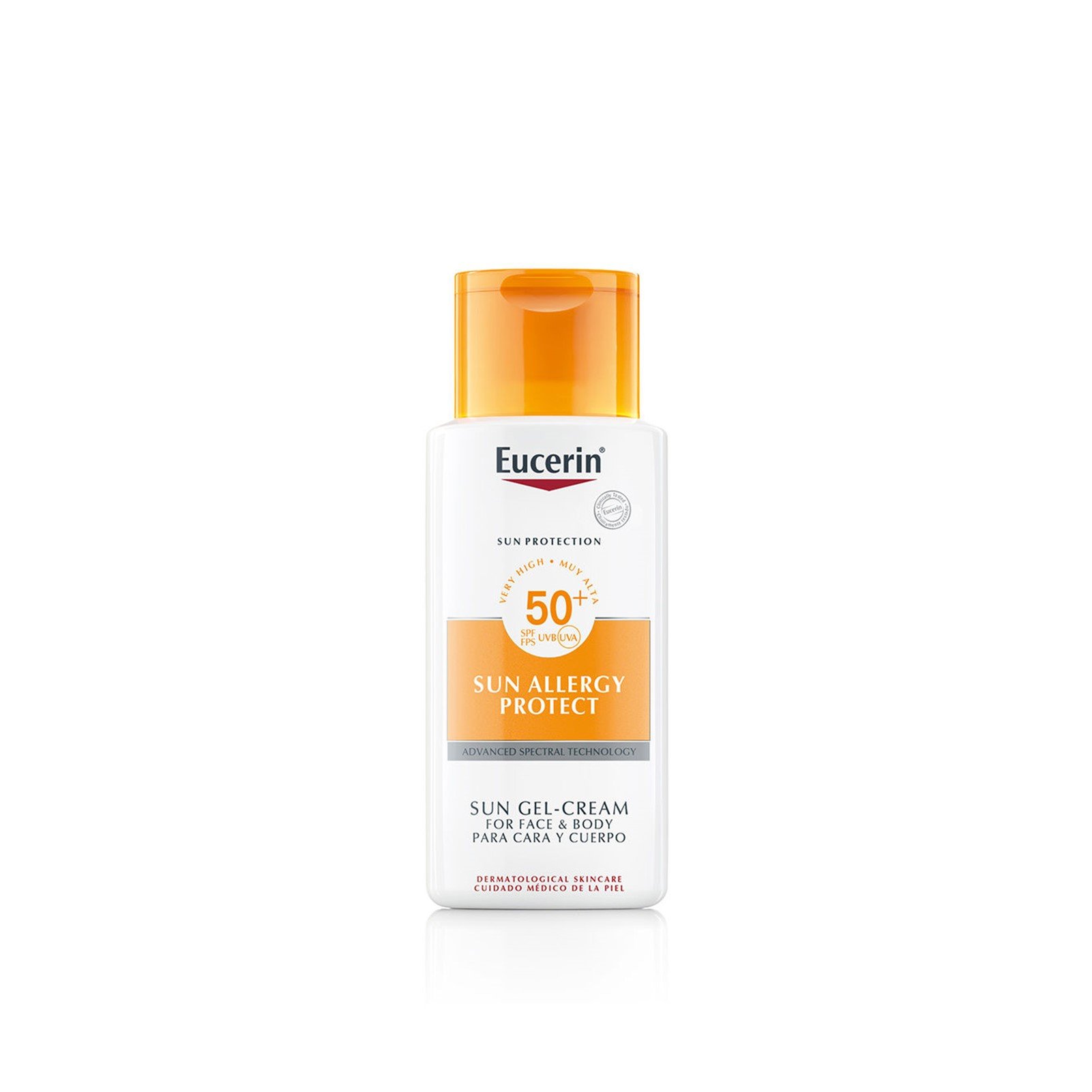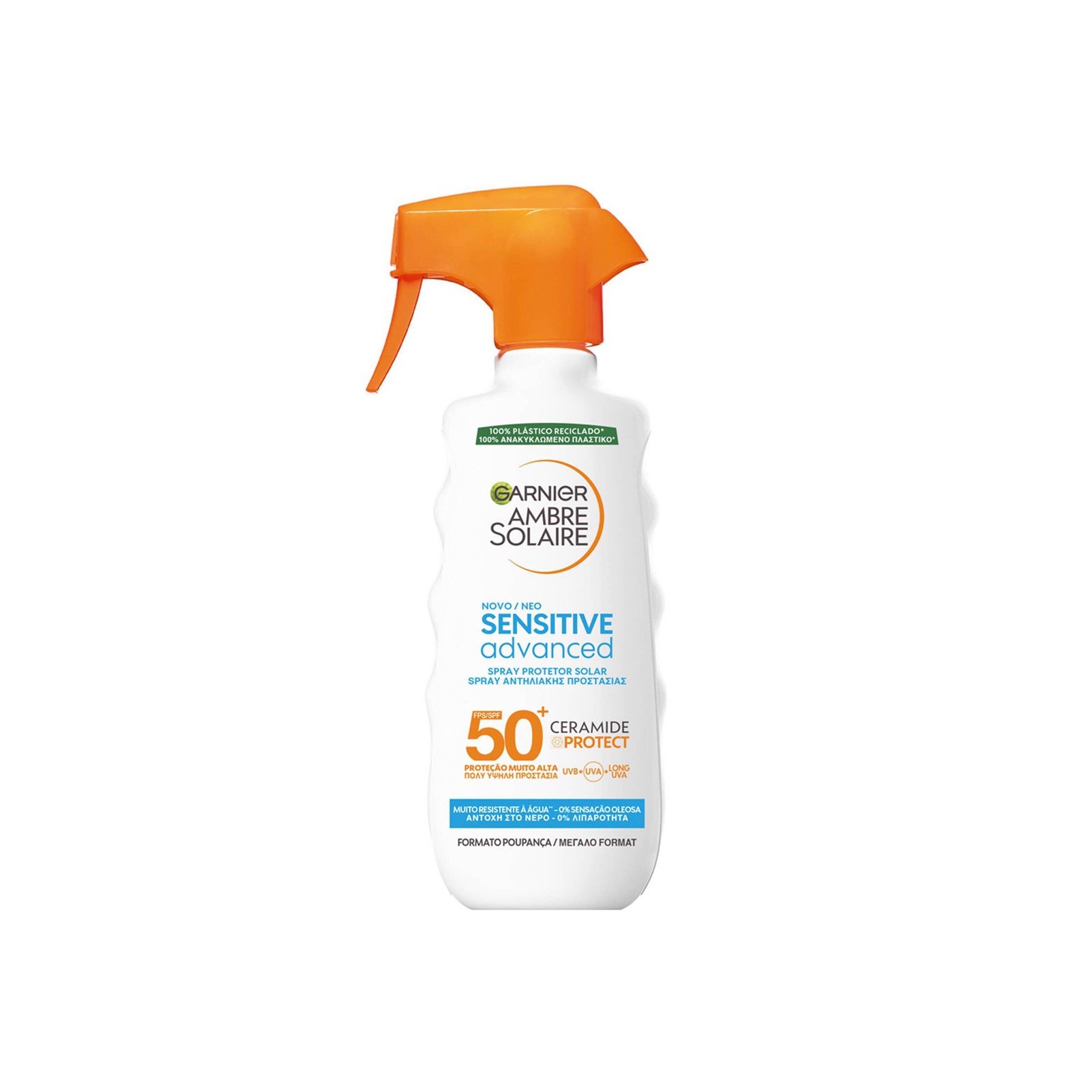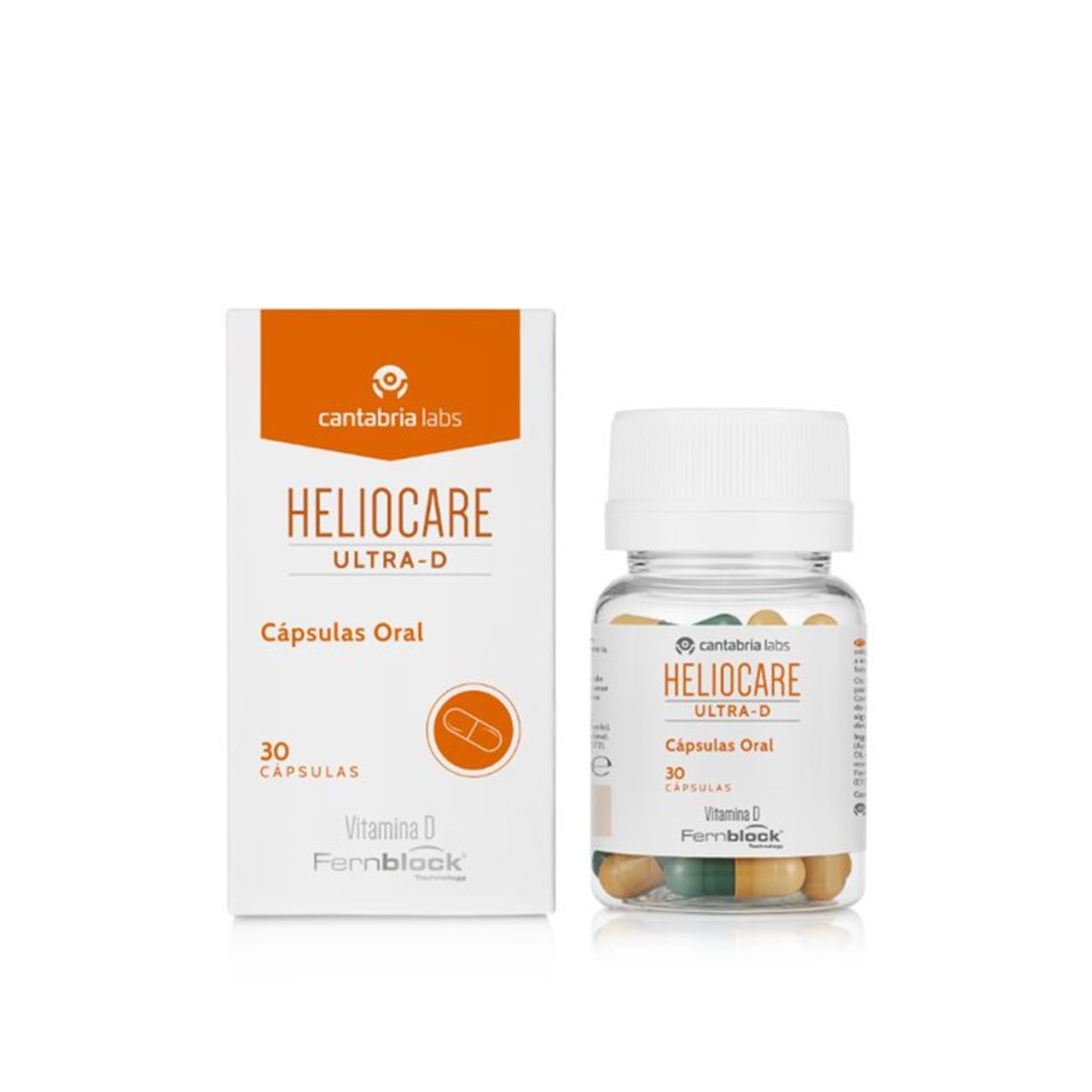
With summer comes the heat, pool season, beach days… and, often, sun rashes. Not everyone gets sun rashes, and it’s common for people to confuse them with sunburns. However, a sun rash is quite different from a sunburn. If you’ve got localized redness together with bumpy skin and itching, it’s possible that what you’ve got is actually a sun rash, and not a sunburn. In this post, we’ll help you figure out sun rashes and sun allergy (also sometimes known as Polymorphic Light Eruption, or PLE), and send you on your way with some tips to help you manage this condition.
What is sun allergy?
Some people have photosensitivity, meaning that their skin is particularly sensitive to sun exposure and can overreact to normal sun exposure. In these cases, it’s common to experience some abnormal skin reactions to sunlight, called photodermatosis. These are usually manifested with a sun rash (redness, bumpy skin) and can be caused by two different sets of culprits:
- Phototoxicity, which comes after the skin is exposed to certain substances and then to sunlight. You can have phototoxicity both from oral/IV substances (such as some oral meds) as well as from contacting topically with substances (like citruses);
- Photoallergy, which is what we’re focusing on today. Photoallergy is like an allergic reaction to sunlight, and is mediated by your immune system. It usually comes around two hours after sun exposure, and tends to be chronic.
While phototoxicity can be avoided by just not being in the sun after contact with those substances, photoallergy is harder to deal with. Photoallergies are usually chronic, reoccur every year, and can even last for the entire year in some rare cases.
Do you suffer from sun allergy?
Sun allergy, also known as Polymorphic Light Eruption (PLE) tends to happen mostly in women of Caucasian ancestry and tends to appear in their 20s-40s. Some people (such as this author) suffer from this since childhood. It’s extremely common in Northern Europe, as it’s more prevalent in very light complexions.
The first bout of skin allergy of the year usually appears a few hours after the first moderate sun exposure during spring. The most common symptoms are as follows:
- Red skin patches in localized areas (mostly the arms, legs, and décolletage);
- Bumpy skin;
- Moderate to severe itching;
- No temperature alterations (not hot to the touch).
- Happens every year in the same spots and fades away during colder months.
In short: if you experience localized bumpy and itchy rashes every year after the first time you get direct sunlight on your skin, you may suffer from Polymorphic Light Eruption. It’s always a good idea to seek medical advice before assuming any diagnosis, but it’s also good to have some notion of what may be going on.
How to tell sun allergy from sunburn
Sun allergy and sunburn both appear after the skin has been exposed to sunlight, but there are several differences between them. We saw above that sun allergy usually manifests in red patches that may feel bumpy and itchy, but not hot to the touch; the affected area tends to be the same every year. When compared to sun allergy, sunburn is quite different. Here’s what sunburns usually feel and look like:
- Hot to the touch;
- Redness all over the skin or in irregular patterns caused by clothing coverage or missed sunscreen application;
- Smooth skin that may also have water blisters;
- Located in any (or all) parts of exposed skin.
Sun allergy and sunburn can both come with fever, although this is more likely to happen with severe sunburns.
As you can see, one of the best ways to tell the difference between sun allergy and sunburn is the affected area. The temperature of the skin (does it feel hot to the touch?) is also a good indicator. Lastly, always keep in mind that sun allergy tends to manifest in the same area year after year, unlike sunburn, which tends to affect exposed areas.
How do you manage sun allergy?
Firstly, it’s a good idea to check if you’re taking any meds that can aggravate your sun allergy. Your doctor can help you check this.
Secondly, taking a cautious approach to sun exposure is key. Since the symptoms of sun allergy usually appear after the the first exposure to direct intense sunlight, those first exposures are extremely important. Namely, always try to gradually increase your sun exposure step by step. This will help your skin to slowly adapt to being in the sun. This practice alone can actually solve less severe cases of allergy.
A definite no is going from no sun exposure to maximum sun exposure (like, say, going on a beach vacation to a tropical country during the winter). If you’re planning on having such an experience, please always check with your doctor if there are options available. In some cases, phototherapy may help.
Lastly, always choose adequate sunscreens for sun-allergic skin.
The best sunscreen for sun allergy
If you have sun allergy, making sure you’re choosing your sunscreen well is extremely relevant. Some brands, particularly French pharmacy ones, tend to have great body sunscreens for people with sun allergies. They often contain ingredients such as DNA-repairing enzymes and antioxidants that help you soothe the skin and, in some cases, even prevent flares. This author feels the need to declare her undying love for the Piz Buin Allergy sunscreen, which she has used since she was about 10 years old. It’s super lightweight, easy to spread, smells heavenly and actually works. However, there are many others that are formulated for people whose skin doesn’t particularly enjoy being in the sun.
In addition to sunscreens that specifically say they are for sun-allergic skin, there are other alternatives that may be of interest to you. There are a few studies that indicate that taking a Polypodium leucotomos supplement can help reduce sun allergy flares. This plant extract can help the skin by helping prevent UVB-caused cell damage, helping to regulate some important proteins, and reducing inflammation markers. The most studied supplement of the kind is Heliocare Ultra D. This formula has been optimized for cases in which people tend to have difficulty getting sunlight on their skin and need some help.
Besides this, even though it’s rare for sun allergies to appear on the face, if that’s your case make sure to choose a face sunscreen that will help you. It should have a formula containing antioxidants and repairing enzymes, as well as a light texture.
As you can see, even if sun allergy or Polymorphic Light Eruption is a chronic condition, there are some steps you can take to manage it. One of the simplest is to choose the best sunscreen for your case–we recommend that you carefully browse all the available options of sun allergy sunscreens and choose the best fit for you.
Pharmacy Technician & Beauty Writer







